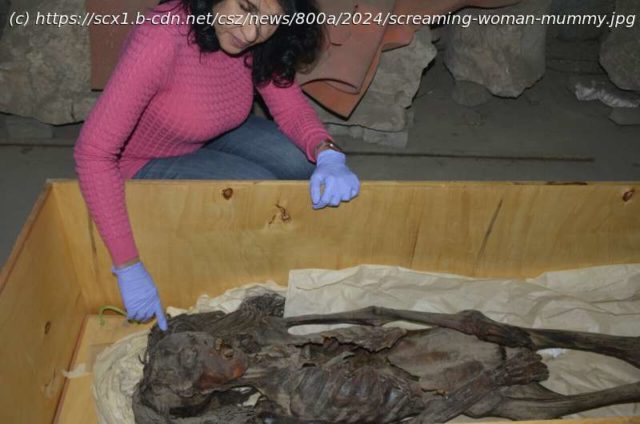In 1935, the Metropolitan Museum of New York led an archaeological expedition to Egypt. In Deir Elbahari near Luxor, the site of ancient Thebes, they excavated the tomb of Senmut, the architect and overseer of royal works—and reputedly, lover—of the famed queen Hatschepsut (1479–1458 BCE). Beneath Senmut’s tomb, they found a separate burial chamber for his mother, Hat-Nufer, and other unidentified relatives.
In 1935, the Metropolitan Museum of New York led an archaeological expedition to Egypt. In Deir Elbahari near Luxor, the site of ancient Thebes, they excavated the tomb of Senmut, the architect and overseer of royal works—and reputedly, lover—of the famed queen Hatschepsut (1479–1458 BCE). Beneath Senmut’s tomb, they found a separate burial chamber for his mother, Hat-Nufer, and other unidentified relatives.
Here, they made an uncanny discovery: a wooden coffin holding the mummy of an elderly woman, wearing a black wig and two scarab rings in silver and gold. But what struck the archaeologists was the mummy’s expression: with the mouth wide open, as if locked in a scream. They dubbed her the „Screaming Woman.“
Now, approximately 2,500 years after her burial, researchers from Egypt have used the most advanced scientific techniques to examine the Screaming Woman and learn about her life and death. The results are published in Frontiers in Medicine.
„Here we show that she was embalmed with costly, imported embalming material. This, and the mummy’s well-preserved appearance, contradicts the traditional belief that a failure to remove her inner organs implied poor mummification“, said Dr. Sahar Saleem, a professor of radiology at Kasr Al Ainy Hospital of Cairo University.
Until 1998, the Screaming Woman had been kept at Kasr Al Ainy School of Medicine in Cairo, where in the 1920s and 1930s researchers studied many royal mummies, including Tutankhamun.






